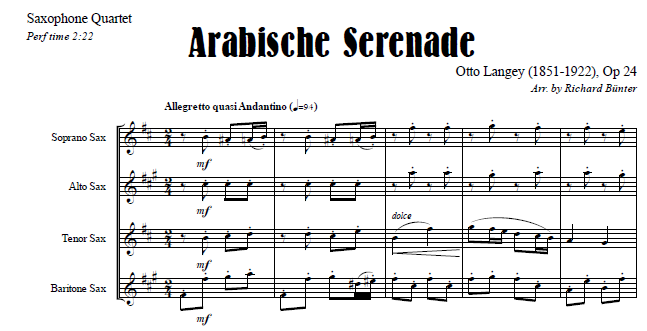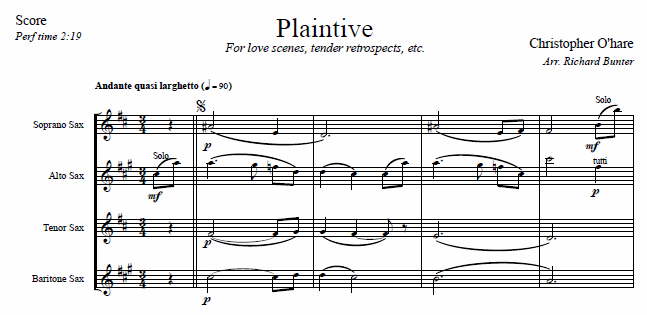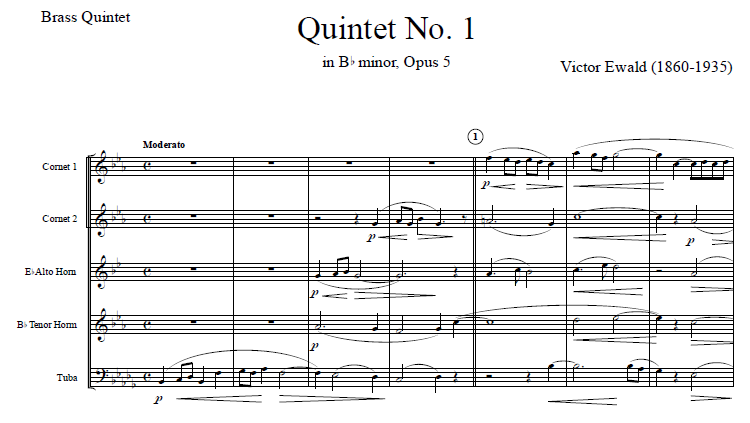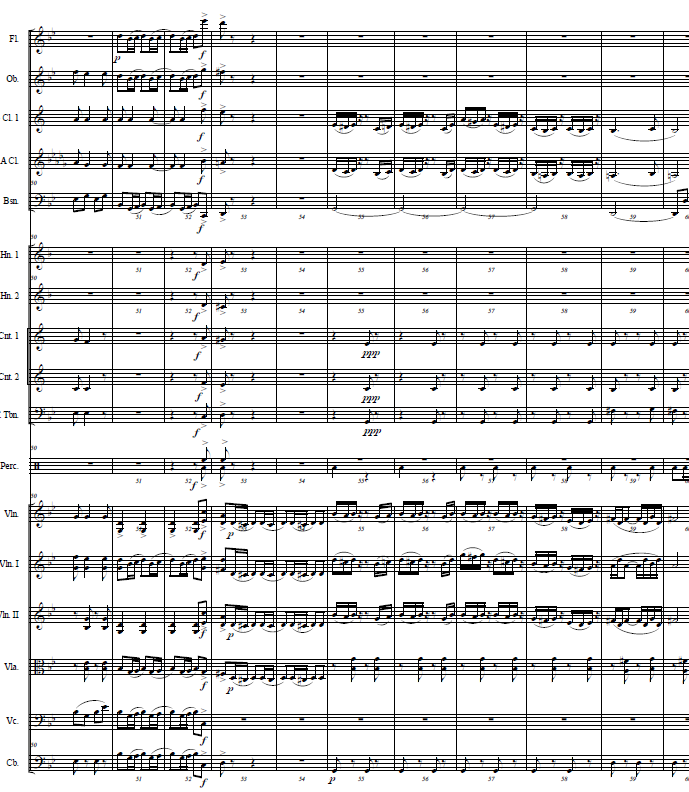In days long past, I was a music engraver and copyist. "What?" you might utter, "I have no idea what those are." You're not alone.
Music Engraving is like typesetting for music. The objective is to make publishing-quality printed music. (I image that in the future the "printing" may be to a digital device.) I entered the field in the 70's, well after the "engraving" part had gone by the wayside; we did everything on paper.
Producing that music is a lot different now, thanks to computers, which do a lot of the drudge work.
I still do engraving; it's an interesting hobby and useful for the groups that I play with. I also do some light arranging (so far mainly for the sax quartet I play with: Saxotopia). Recently this hobby has manifested itself with the production of a Sax Quartet using Otto Langey's 1890's Arabische Serenade:

Plaintive was written by Christopher O'hare back in 1920 or so for use with silent films, here arranged for sax quartet.

And I've re-engraved Victor Ewald's 1902 brass quartet Quintet No 1. In part I just like to do the engraving, but part of the effort is to produce the French Horn and Tuba parts transposed for Alto Sax and Bari Sax. I know; kind of weird. But if you can't find French Horn and Tuba players, you do what you must. This was for 805 Brass, a brass quintet (sort of) based in Ventura, California.

What I used to do a lot of (and really like) was taking parts and producing a score. There's a lot of scoreless stuff out there, for whatever reason. One of my favorites was Musical Scenes from Spain by Otto Langey. It was this piece that made me interested in Langey's work and it turns out he as a prolific composer in the beginning of the 20th century. Unfortunately, it's really hard to track down his orchestral work (I'm particularly interested in his "Scenes from..." compositions.)





